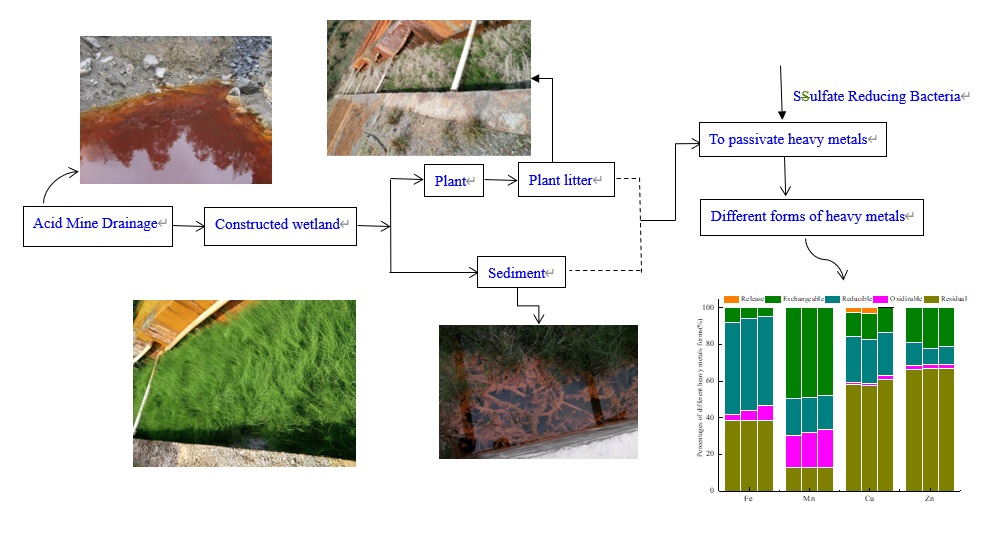
Sediment is a source and sink of heavy metal contaminants in wetlands. In this study, sulfate-reducing bacteria (SRB) were used for the bioremediation of sediments from wetlands affected by acid mine drainage. The sediments were inoculated with SRB to study their influence on both the solution and sediments. The changes of pH, electrical conductivity (EC), redox potential (Eh) values, and sulfate (SO42-), iron (Fe), manganese (Mn), copper (Cu), and zinc (Zn) concentrations in the supernatant were monitored over a period of 70 days. Additionally, the variations in exchangeable, reducible, oxidizable, and residual Fe, Mn, Cu, and Zn concentrations. For the supernatant solution, the pH in all experimental groups decreased slightly within the first 14 days, increased gradually thereafter, and finally stabilized during days 35−70. The EC values and Fe and Mn concentrations displayed a similar trend with concentrations initially increasing and then decreasing. In the SRB-inoculated sediments, Fe, Mn, and Cu were gradually transformed from the exchangeable and reducible fractions to the oxidizable fraction. The inoculation with SRB reduced the ability of Fe, Mn, and Cu to migrate in sediment.
Total file downloads: 36